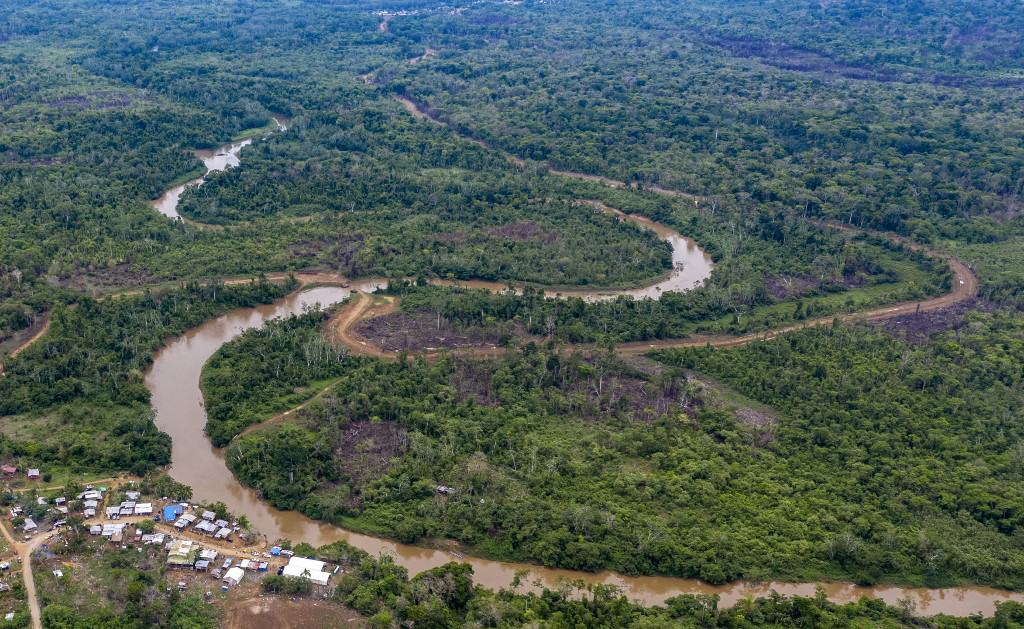Stumbling over a stone in the Colombian jungle, a 12-year-old Haitian boy only pauses before readjusting the folded tent slung over his shoulder and catching up to his family, part of a group of migrants on a perilous journey toward the United States.
The group of some 500 Haitians are making their way on foot through the Darien Gap — a 1,430,000-acre (575,000-hectare) stretch of swampy, snake-infested jungle between South and Central America where criminals routinely rob and rape travelers.
The Darien is the only hope for migrants seeking to cross by land from Colombia to Panama en route to the United States — and the prospect of a better life.
“Those who made it say that one has to prepare mentally to see many things… one is afraid for what can happen, for the children, for the family,” said Francisco, a 30-year-old Haitian bracing himself for the dangerous journey.
AFP accompanied the migrants for part of their four-day trip through the Darien. Almost every day a new group sets out to brave the jungle and inhospitable terrain in a desperate effort to escape South America.
The migrants did not want to give their full names, for fear of having their undocumented journey interrupted and being sent home.
Up to the border with Panama, the migrants were accompanied by three dozen “guides” dressed in black, who claim to offer the group “protection.”
For the unsolicited service, each migrant had to pay $300.
Dragging children by the hand or carrying them on their backs, many shed their belongings along the way as the road stretched on and fatigue set in.
The children don’t understand
Most of the Haitians in the group come from Chile or Brazil, countries they moved to after the 2010 earthquake that killed some 200,000 people in their home country.
The South American economies, however, have been hard-hit by the coronavirus pandemic, and now that travel restrictions are being lifted, many people have decided to head north.
One 38-year-old Haitian woman had migrated to the Dominican Republic and then to Chile, where she worked for years to save up money for the trip with her kids.
She told her children “that we are going on a trip and that we could encounter attackers, animals, many dangers,” the woman told AFP.
Michaud Noel, 41, saved $1,500 in Brazil, where he worked in construction for a while to cover the costs of the trip for him and his family.
The night before entering the Darien Gap at the migrants’ temporary camp, on the edge of the jungle, Noel was so anxious that he could not sleep.
He was traveling with his partner, his four-year-old daughter, a 14-year-old niece and his brother, who carried the youngest child on his shoulders.
“The children don’t understand what is happening,” he said.
On some of the most difficult parts of the trek, the members of the group, advancing in a long line, hold hands and form a human accordion that stretches and contracts as people struggle over slippery, uneven terrain.
Ann Ale
The group walks for two days in the Colombian jungle until they reach the top of the mountain range bordering Panama.
A physically fit person could make the journey in a day, “but here we have children, old people, obese people, sick people,” said Alexis, one of the guides.
From the many Haitians he has accompanied, Alexis, 42, learnt the Creole phrase “Ann Ale” (Let’s go), which he repeats frequently as he leads the migrants through a stretch of jungle where the Gulf Clan — Colombia’s most powerful criminal syndicate — reigns supreme.
Warned of encountering assailants along the way, the migrants follow their guides with a mix of distrust and relief.
Alexis disdains the word “coyote,” the name associated with human smugglers in Mexico.
“I am not a coyote. A coyote is someone who robs, rapes, scams his clients,” said the gray-haired guide, who refuses to be filmed. “I’m a guide and we are here to help.”
Alexis concedes the guides operate with the Gulf Clan’s blessing — for a fee. In return, the clan promises to protect the passing migrants from rival marauders.
There are no police, soldiers, or any government presence in the region.
Trust in God
Day one of the migrants’ journey starts at dawn.
Locals appear periodically from villages along the trail offering to help carry luggage.
Noel’s family initially refuses, but after an hour’s walk over jagged stones in the suffocating jungle heat, they negotiate a fee: $40 to carry two suitcases.
A man takes one on his back and disappears up the path. The family can rest assured they will find their belongings at the next camp, said a guide.
By 9 am, the group is already exhausted as they reach a steep, muddy ravine.
“Trust in God because if you don’t have God, you won’t make it there,” said one migrant.
When they reach the mountain top at the end of the second day, the guides leave and the Haitians are on their own for the final two days’ trek on the Panama side.
Alexis described the area as a “no man’s land” of rival gangs.
Since the beginning of the year, some 70,000 people have made the journey across the border from Colombia, according to Panamanian authorities.
A further 19,000 are awaiting their turn at the Colombian port of Necocli, undeterred by the treacherous journey ahead of them.
by Juan Sebastian SERRANO






